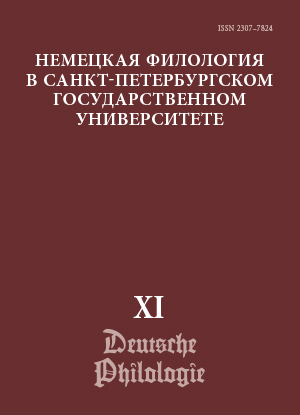Contrastive analysis of urbanonyms of historical cities in Germany and Russia
Abstract
Toponymy is an important research object of ethnolinguistics, it reflects the linguistic world view, but nowadays there are almost no ongoing contrastive studies of urban objects. The goal of the article is to identify language and cultural similarities in street names in German and Russia. The material used is maps and plans of German and Russian cities, having been established by the 18th century and preserving their historical lay-out. The methodology includes qualitative, lexical, semantical, morphological-structural analysis. The study showcases that Russian names differ from the German ones through a variety of status parts (ulitsa, prospect, pereulok, proezd, trakt, shosse vs. Straße, Gasse, Allee). Both cultures have names without a status part. Semantically all urbanonyms are divided into several groups: urbanonyms deriving prom personal names, from sites, from churches, from placenames, from geographical sits, from social groups, and from the features of the urban object itself. In the cultures under research different groups prevail. While modern Russian streets are called after certain people, historically their names are derived from the names of churches or the names of site owners. The latter is still a widespread type in German towns along with the urbanonyms deriving from social groups, geographical sites, and objects which has already disappeared, for instance, gates and city walls. In Russia, this type is not frequent. We can conclude that, unlike Russian urbanonyms, German ones reflect a higher grade of structuration of world view of the Germans, preserve their ties with local culture and demonstrate will to keep historical names.
Keywords:
hodonym, agoronym, historical toponymy, comparative linguistics, linguistic culturology, Germany, Russia
Downloads
References
Литература
References
Downloads
Published
How to Cite
Issue
Section
License
Условия передачи авторских прав на статьи и рецензии, опубликованные в ежегодном периодическом издании «Немецкая филология» регулируются условиями Лицензионного Договора автора с Санкт-Петербургским государственным университетом. В соответствии с Лицензионным Договором опубликованные материалы находятся в открытом доступе, а авторам бесплатно предоставляется неограниченные возможности их распространения и самостоятельного архивирования.




